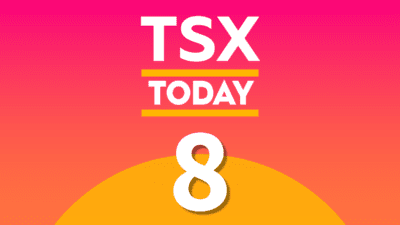Roger Ibbotson and colleagues wrote a 2010 paper for the Financial Analysts Journal that showed 75% of a typical mutual fund’s price performance over different lengths of time was caused by the general movement of the market with the remaining 25% split between asset allocation and stock selection.
What does that mean for the average investor?
You’d better be in the market at all times, because no matter what asset classes you choose to invest in or stocks you pick, if you’re not in the market when it’s moving higher, as has generally been the case since early 2009, you’re missing out in a big way.
As we enter the holiday homestretch, many of us are struggling to find the perfect gift for the loved ones on our list. Like choosing presents to buy, sometimes it’s difficult to identify the right stocks to put in your portfolio.
Are you stuck for ideas this holiday season? I suggest you consider investing in Canada’s best brands—a list of 25 companies that Canadian Business magazine has identified as heads above the rest.
This year’s list includes 18 public companies.
Canada’s best brands 2017
| Company | Five-Year
Annualized Total Return |
Company | Five-Year
Annualized Total Return |
| Bank of Nova Scotia | 7.9% | BRP Inc.
(TSX:DOO) |
N/A |
| Quebecor, Inc. (TSX:QBR.B) | 18.0% | Jean Coutu Group PJC Inc. (TSX:PJC.A) | 12.6% |
| Cineplex Inc. (TSX:CGX) |
16.7% | Toronto-Dominion Bank | 15.1% |
| Great-West Lifeco Inc. (TSX:GWO) | 16.0% | Saputo Inc.
(TSX:SAP) |
19.8% |
| Lowe’s Companies, Inc. (NYSE:LOW) | 26.2% | IMAX Corporation (NYSE:IMAX) | 9.2% |
| Metro, Inc.
(TSX:MRU) |
19.2% | Loblaw Companies Limited
(TSX:L) |
14.7% |
| Telus Corporation (TSX:T)(NYSE:TU) | 12.7% | Canadian Tire Corporation Limited (TSX:CTC.A) | 18.2% |
| Bank of Montreal (TSX:BMO)(NYSE:BMO) | 14.8% | Restaurant Brands International Inc. (TSX:QSR)(NYSE:QSR) | N/A |
| Empire Company Limited | -0.02% | WestJet Airlines Ltd. (TSX:WJA) | 18.3% |
Source: Morningstar.ca
Up and down both columns, there are some outstanding five-year returns. With an average five-year return of 15%, Canada’s best brands’ performance equaled that of the S&P 500 Total Return Index and handily beat the S&P/TSX Composite Total Return Index by 665 basis points.
Both BRP and Restaurant Brands International were not included in the performance figures for Canada’s best brands because they’ve been public companies for less than five years. However, I wouldn’t hesitate to add both to the mix because they’re both delivering good results.
Rules of engagement
The simplest thing to do here is to buy all 18 stocks in equal-weighted positions and then rebalance at the beginning of 2018 and every January thereafter. That way you push off any capital gains to the following tax year. Conversely, you’ll want to sell the losses in early December to offset against the gains generated at the beginning of the year.
With the exception of IMAX and Lowe’s, Canada’s best brands all trade on the TSX. If you don’t want to deal with the currency issues, a possible alternative to owning both stocks in a U.S. dollar account is to buy the equivalent of two positions in the Vanguard US Total Market Index ETF (TSX:VUN), which tracks the entire U.S. stock market. It holds both Lowe’s and IMAX, and while it hasn’t traded for five years, its three-year annualized total return is 17.7% with a low 0.16% management-expense ratio.
If you’re worried about diversification, don’t be. You’ve got at least five sectors represented, including three of Canada’s big banks and three of Canada’s top grocery stores. You have to eat, and you have to bank, so owning these companies long term makes sense.
Energy stocks, which make up a big part of the TSX, are also missing, so you might consider adding a couple of positions (rounding it up to 20) in a broad-based energy ETF, such as BMO S&P/TSX Equal Weight Oil & Gas Index ETF (TSX:ZEO).
And with that, you’re good to go.








